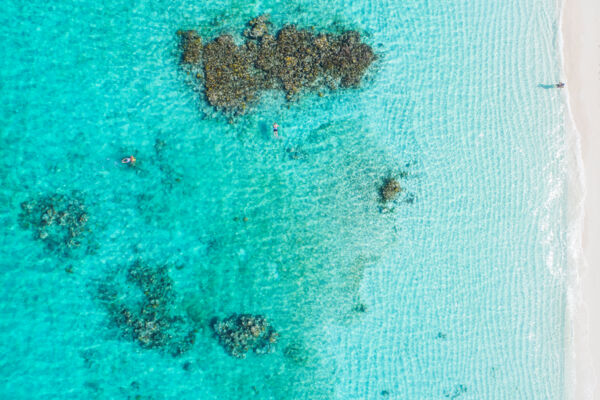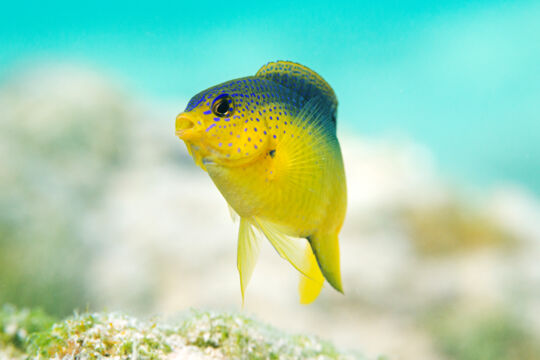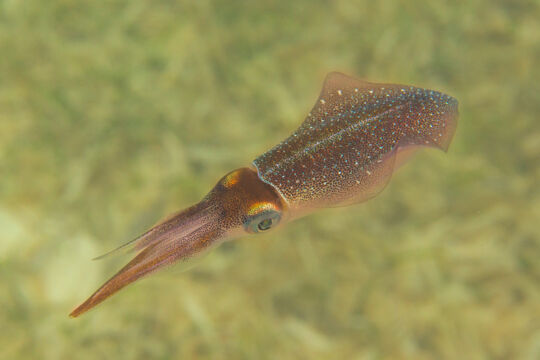Smith’s Reef Providenciales
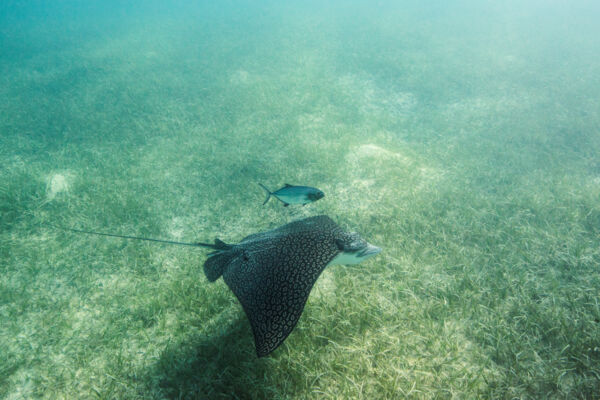
Smith’s Reef is a beautiful snorkeling site off central Providenciales, and comprises several distinct reef systems and coral heads. The outer reefs at Smith’s Reef are the best easily accessible beach snorkeling site on the island.
Smith’s Reef is located near Turtle Cove on the north coast of Providenciales, about 3.5 miles (5.6 km) from Grace Bay. It’s possible to walk along the beach from Grace Bay to Smith’s Reef, yet many will find the distance too far to be pleasant.
There are several reefs in the area, with sites suitable for novice and experienced snorkelers alike. To protect the environment, ensure not to brush anything with your fins, camera, or other gear while snorkeling.
Fish, Coral, and Marine Life
The variety of wildlife and coral at Smith’s Reef varies quite a bit by each individual reef, yet nearly every reef offers great arrays of colorful reef fish.
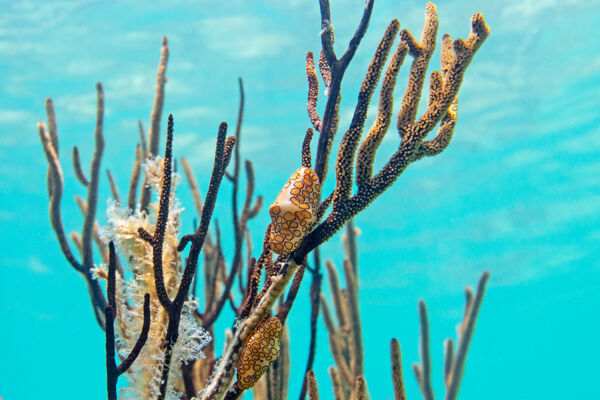
The larger creatures include green and hawksbill turtles, southern brown stingrays, and majestic spotted eagle rays.
There are so many colorful and unique fish to see at Smith’s Reef, including stoplight parrotfish, queen angelfish, French angelfish, butterfly fish, porcupinefish, trumpetfish, yellowtail snapper, squirrelfish, damselfish, rock hinds, French grunts, filefish, bluehead wrasse, indigo hamlets, horse-eye jacks, barracuda, and many more.
Under the ledges are spiny lobsters, slipper lobsters, banded coral shrimp, spotted moray eels, and channel crabs.
There’s a wide array of hard and soft corals, sea fans, sponges, and other sessile animals, which tend to be in healthier condition than what’s found at many of the other easily accessed snorkeling sites on Providenciales.
Night Snorkeling
At night, different creatures emerge, including squid, shrimp, large sea worms, sea snails, and the occasional octopus.
If you can fit it into your vacation schedule, revisiting to snorkel at night can be very rewarding. It’s necessary to have a dive light when night snorkeling, as even regular flashlights advertised as waterproof tend to eventually be destroyed by corrosive seawater seeping into the light. See Providenciales Water Sports Shopping.
If you are in charge of children, ensure that they understand and follow these guidelines.
Ocean Conditions and Dangers
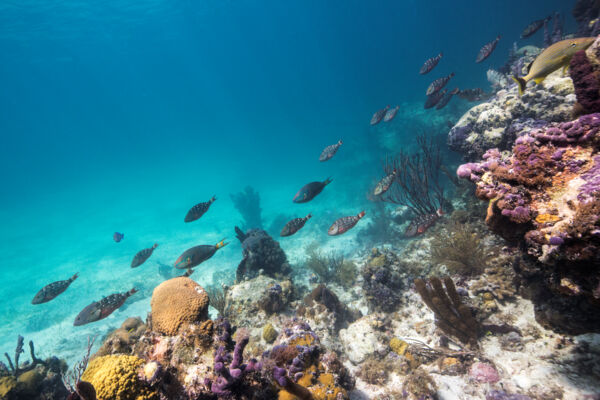
Smith’s Reef is generally a safe and stress-free area to snorkel. The greatest considerations are boat traffic, currents, and lionfish.
Watercraft Traffic
Smith’s Reef is located near Turtle Cove Marina, and vessels commonly enter and exit the marina. This traffic travels quite a distance from the popular reefs, yet it’s possible to stray into the entry channel. Don’t snorkel or swim in or near the canal into Turtle Cove Marina, or at the rock jetty at the entrance.
Due to the many reefs and shoals, nearly all boats entering Turtle Cove Marina closely follow the same route, so it’s easy to get an idea of which areas to avoid if you watch a boat or two.
Currents and Water Movement
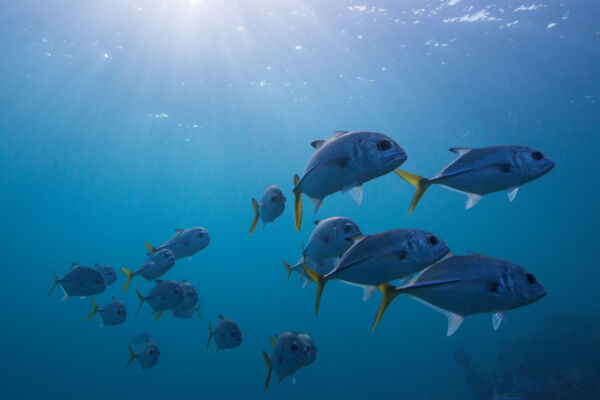
There can be a strong current at times at Smith’s Reef. The largest reef in the area is located off a small point of land, and normal tide changes can accelerate water movement around the point. This current travels parallel to the beach, and subsides significantly after a short distance.
This current generally isn’t a major concern or danger if you understand how it works. If you find yourself in the current, simply swim at a comfortable pace toward shore, and don’t try to fight your way back against the water movement. You may end up a short distance from your starting point, but it’ll only take a minute to walk back up the coast.
If there are abnormal weather or storm conditions present, it’s best to avoid swimming in the ocean.
Strong wind conditions can cause choppy waves, which can be unpleasant to snorkel in. See Wind, Waves and Tide for a forecast and more details.
Lionfish
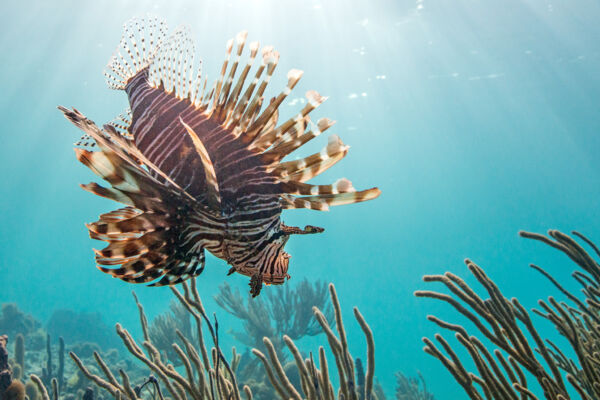
The red lionfish (Pterois volitans) can be found in the Turks and Caicos. This invasive and predatory species from the Indo-Pacific is now common throughout the warmer Atlantic and Caribbean.
Lionfish have venomous spines that are able to give very painful stings, which in worst-case scenarios can cause temporary seizures or paralysis. They are very unaggressive and tend to stay close to the reef, yet are easier to approach than other fish. Keep a safe distance from this fish.
In the rare cases of a sting, nearly all situations were swimmers or snorkelers who inadvertently touched the lionfish and were not aggressively attacked. If you see a lionfish, keep a distance of several feet or a meter away to be safe. Other animals and corals can also sting, so be sure not to touch or stand on the reef.
Lionfish are very damaging to the reef environment, as they consume incredible amounts of the smaller reef fish and have no known natural predators in the Atlantic and Caribbean regions. Regional efforts are being made to remove lionfish, largely by promoting the consumption of the fish. Mature adults reach a length of about 14 inches (35 cm).
Sharks
It’s very uncommon to spot a shark at Smith’s Reef. If you’re very lucky, you may spot a docile nurse shark. Southern brown stingrays and spotted eagle rays, which are closely related to sharks, are typical sightings at Smith’s Reef.
Rental Villas













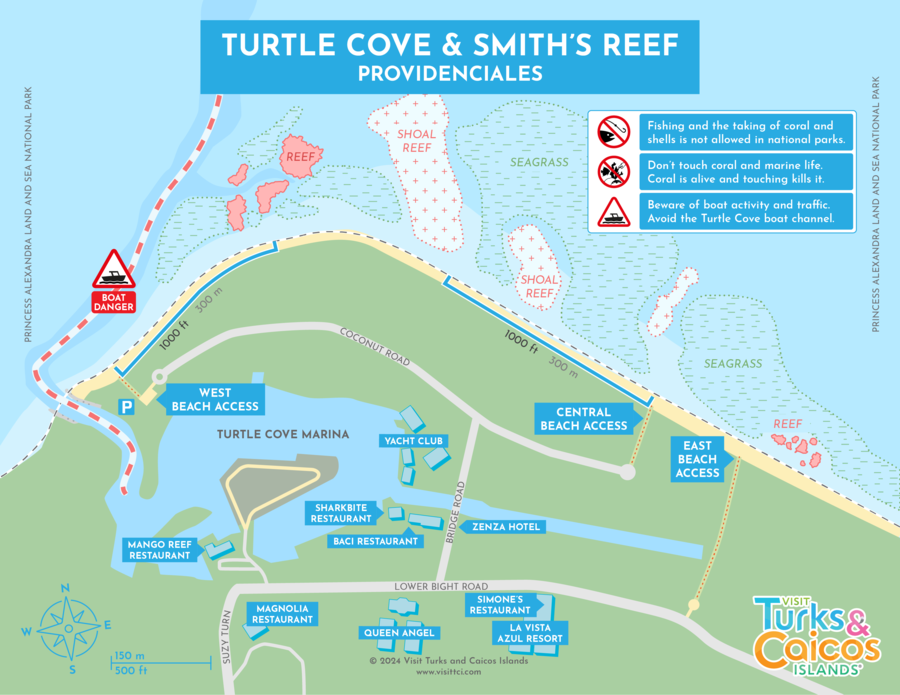
Smith’s Reef Beach Accesses
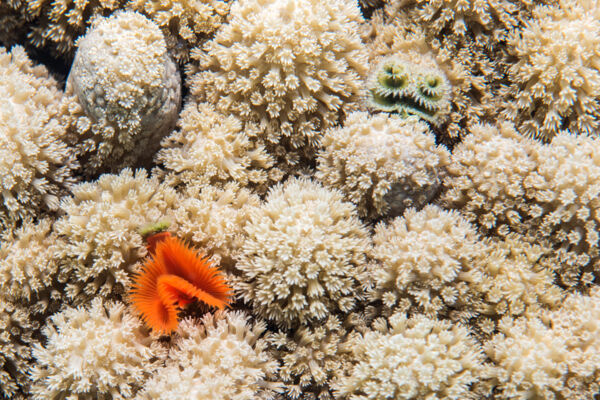
The Smith’s Reef area has three public beach accesses, and each offers interesting sights. It can be a little difficult to find some of the reefs. For walking distances and more information, reference the Smith’s Reef map above.
West Access
The reefs near the West access and off the rocky point are the best in the area. The two systems close to shore shelter large numbers of fish, yet the coral is a little drab compared to the deeper section of the reef, which is found across a 100-foot (30 m) wide and 18-foot (5.5 m) deep channel.
Central Access
At the Central access, two shoal reefs extend out from the beach. The corals aren’t quite as vibrant here as at the north access, yet there’s lush seagrass, southern brown stingrays, turtles, and large numbers of parrotfish.
East Access
The East access offers several small coral heads quite close to the beach. This is an excellent choice when visiting with children, due to the shallow water and the short swimming distance.
There typically aren’t any sightings of the larger sea creatures, yet juvenile reef fish, squid, and coral are abundant.

